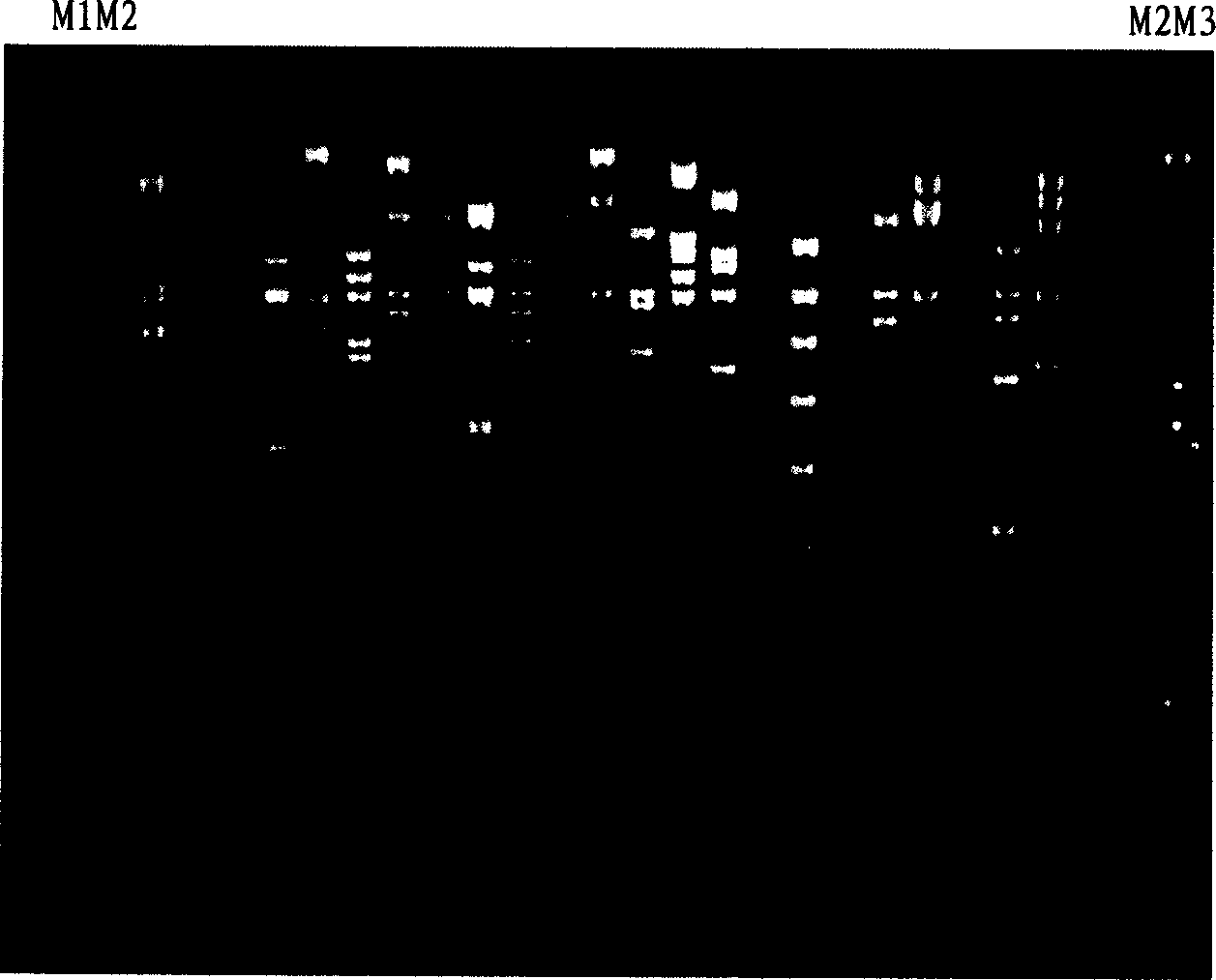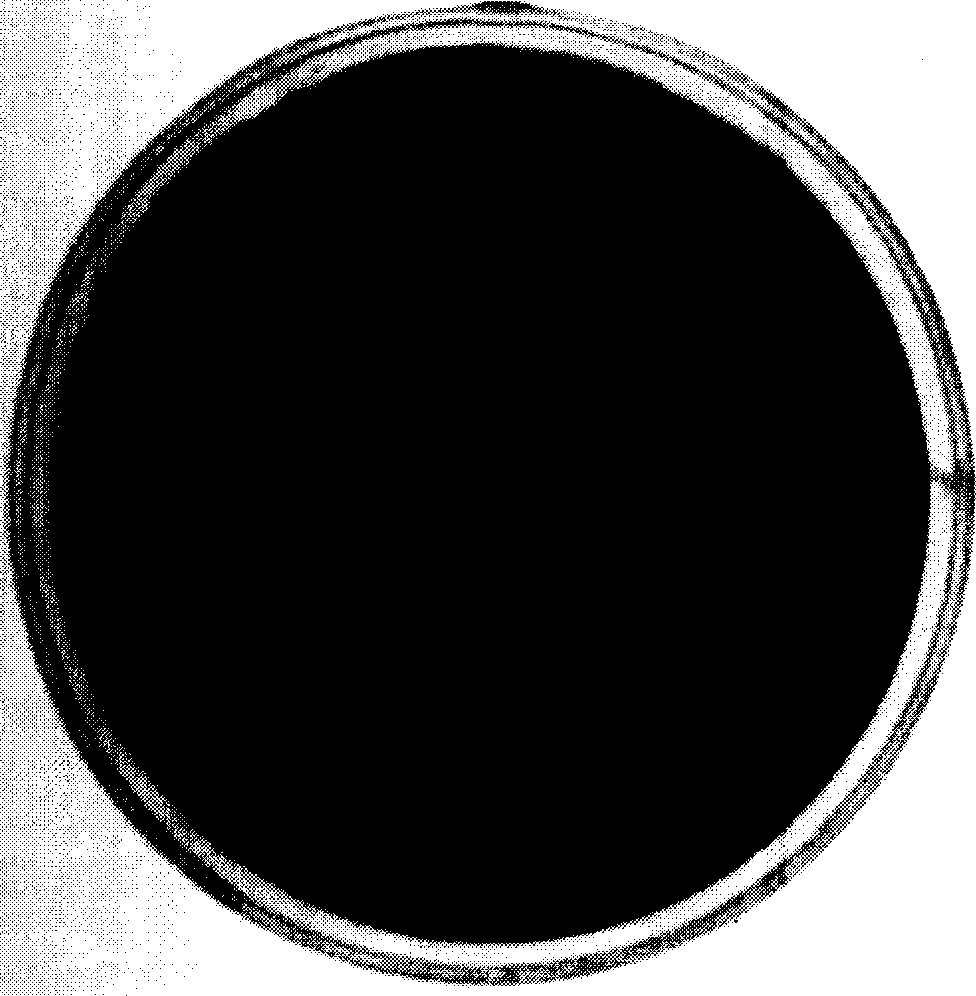Coding gene of cellulose of glycosyl hydrolase family 5 and its application
A technology of cellulase and gene, which is applied in application, genetic engineering, plant genetic improvement, etc., can solve the problems of low efficiency, high cost, and high price
- Summary
- Abstract
- Description
- Claims
- Application Information
AI Technical Summary
Problems solved by technology
Method used
Image
Examples
Embodiment 1
[0018] Embodiment 1. Composting of compost
[0019] Composting is carried out in a self-made 1m x 1m x 1.2m cement trough with built-in ventilation ducts. The pipe is connected to a blower outside the tank. The compost formula is: straw, 50kg; cow manure, 50kg; pig manure, 10kg; chicken manure, 10kg; waste newspaper, 5kg; rural compost, 80kg; forest soil, 2.5kg; green turf, 5kg; orchard soil, 2.5kg ; Vegetable garden soil, 5kg; Bamboo forest soil, 5kg; Yeast powder, 0.065kg; Ammonium sulfate, 1kg; Urea, 0.411kg; Water, 67kg. Cut the straw into a length of about 5cm, weigh each raw material according to the above formula, mix all formula materials except the straw evenly, and then mix it with the straw straw, add an appropriate amount of water in the process to make the final water content of the compost Controlled at around 59%. After mixing evenly, fill the compost fermentation tank. The air supply method adopts the forced ventilation of the blower, and the air is supplie...
Embodiment 2
[0020] Example 2. Construction of a genomic library of uncultivated microorganisms in compost
[0021] Get 50g compost soil, suspend in the 0.18M potassium phosphate buffer solution (pH7.2) of 100ml, after thorough mixing, on the JA-10 rotor of Beckman Coulter Avanti J-E centrifuge (purchased from Beckman Coulter Company, catalog number 369003) Centrifuge at 600g for 10 minutes, collect the supernatant, add 40ml of PVPP (polyvinylpolypyrrolidone, polyvinylpolypyrrolidone) solution (PVPP solution: every 100mg of PVPP (purchased from Sigma, catalog number P-6755) and 1ml of 0.18M potassium phosphate buffer (pH7.2) and mix well), shake for 30 seconds, then add 200 μl of 3M CaCl2 solution, shake for 30 seconds, centrifuge at 600 g for 5 minutes, and collect the supernatant in another centrifuge tube. Then use the same centrifuge and rotor to centrifuge for 15 minutes to collect the bacterial cells in the supernatant. Fully suspend the collected cells in 1ml TE (10mM Tris / HCl, pH8...
Embodiment 3
[0023] Example 3. Screening of clones expressing cellulase activity from a genomic library of composted uncultured microorganisms
[0024]The transformants obtained on the LA plate containing ampicillin (about 200 colonies per plate) were respectively copied to 0.5% carboxylmethylcellulose (carboxylmethylcellulose, CMC) (purchased from Sigma Company, catalog number C) by plate copy method. -5678) LA plate and LA plate containing ampicillin (100 μg / mL), place the plate upside down in a 37°C incubator and culture for 24 hours, then store the LA plate containing ampicillin full of colonies in a 4°C refrigerator 1. Stain the LA plate containing carboxymethylcellulose covered with colonies with 0.5% Congo red solution for 15 minutes, decolorize with 1M NaCl solution for 15 minutes, and then detect whether there is a hydrolysis circle around the colonies (see image 3 ), as a result, 4 clones with hydrolysis circles around the colonies were screened. The present invention only invol...
PUM
| Property | Measurement | Unit |
|---|---|---|
| molecular weight | aaaaa | aaaaa |
Abstract
Description
Claims
Application Information
 Login to View More
Login to View More - R&D
- Intellectual Property
- Life Sciences
- Materials
- Tech Scout
- Unparalleled Data Quality
- Higher Quality Content
- 60% Fewer Hallucinations
Browse by: Latest US Patents, China's latest patents, Technical Efficacy Thesaurus, Application Domain, Technology Topic, Popular Technical Reports.
© 2025 PatSnap. All rights reserved.Legal|Privacy policy|Modern Slavery Act Transparency Statement|Sitemap|About US| Contact US: help@patsnap.com



